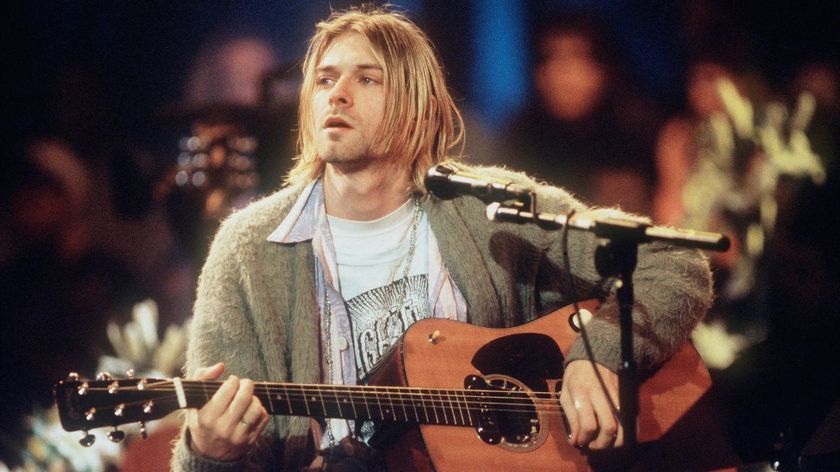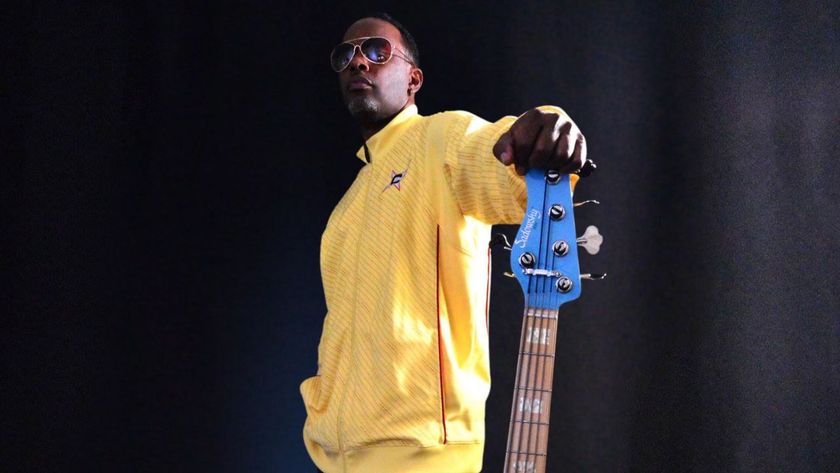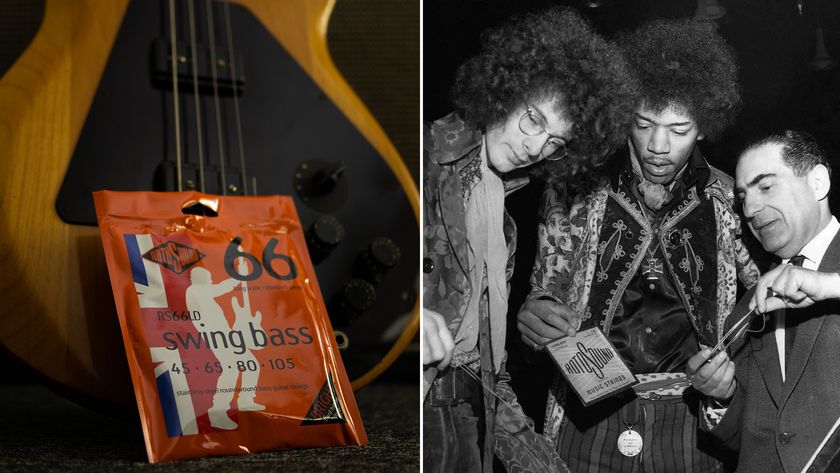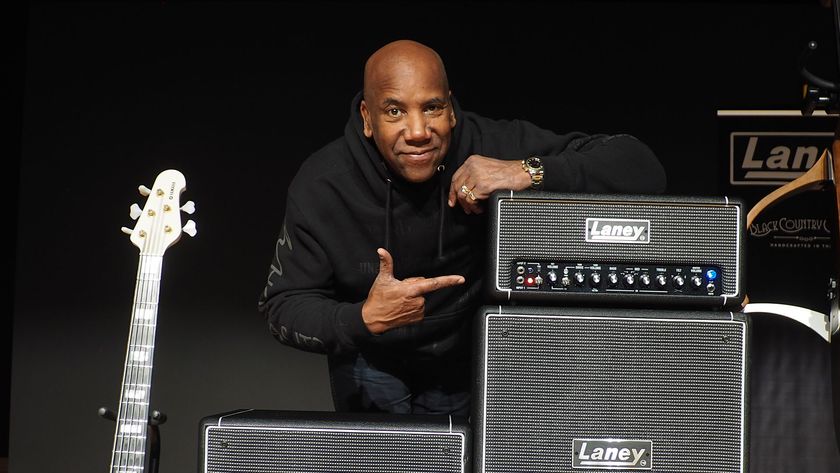Exclusive Interview: G. Love Talks 'Sugar' with Special Sauce

I had the pleasure of seeing a live show at SXSW that previewed some killer songs from the new album by G. Love & Special Sauce.
I admit, I haven’t been a Sauce fan for decades like some of my friends, but I am now!
Now celebrating its 20 year anniversary, the group has reunited after eight years and is poised to put out Sugar on April 22, 2014, an album of songs that has got its groove on.
And far be it from us to jump on the party wagon. So in honor of this release, we’re teaming up with the G. man himself to give away one of his signature Eastwood guitars. Read on and then click here to enter>>
Built on the trio’s signature hip-hop blues sound, Sugar finds vocalist/guitarist/harmonica player G. Love (aka Garrett Dutton), upright bassist James “Jimi Jazz” Prescott, and drummer Jeffrey “The Houseman” Clemens breathing new life into their groove-heavy, Chicago-blues-infused brand of stripped-down rock & roll.
G. Love shares, “The goal for the album was to make it really raw and immediate, with live takes and live vocals and everybody playing so that it all comes together in that intangible way,” says G. Love. “That’s what our music is all about.”
- The boys brought in some amazing additional talent for further inspiration including
- Los Lobos guitarist David Hidalgo (who appears on three of the album’s tracks), soul/R&B singer/songwriter Marc Broussard, and the legendary vocalist Merry Clayton (best known for her duet with Mick Jagger on the Rolling Stones’ “Gimme Shelter”).
Favorite cuts from the album include the cleverly written ““Too Much Month” and the infectious title track, “Sugar.”
Get The Pick Newsletter
All the latest guitar news, interviews, lessons, reviews, deals and more, direct to your inbox!
Here we sat down with G. Love to get the scoop…
Why don’t you talk a little bit about some of the inspiration for some of the songs on Sugar?
Okay. I think, well it’s funny ‘cause we did only two sessions for this record. The first one we did out in Seattle at Bear Creek Studios with Ryan Hadlock. That was kind of supposed to be the main session.
We have this creative process, which is myself, Emmett, Josh at the label, my manager Jason Brown. Basically I write a lot of tunes, and then I send ‘em to them, then they tell me that they suck or that parts of them are good. It’s a process that over the years that’s been effective for the finished product, but as a writer, it’s a little bit of a struggle to go through sometimes.
But the end result is worth it?
Yeah! We had to finally whittle down from 40 tunes to the 16 on the record. It has kind of a lot of heartbreak tunes, ‘cause I’ve been through this terrible disengagement with the woman that I loved. I was pretty heartbroken and I was writing a lot about that.
So we went out and recorded it, and I thought it was really great. There was one song that they didn’t want me to record. It was this song called “The Come Up Man.” And I said, “Well, this is like my new style. I really want to record it.” They’re like, “All right, whatever. We don’t want you to.” I ended up recording it.
After we got home from the session, I was like, “Aw, dude, this record’s going to be a game-changer. It’s amazing. So stoked.” And they were really lukewarm about the whole thing. And I was like, “What?!” And they said, “Well, we think you got a couple good songs.”
So, they go, “Well, the one song we really like out of it is ‘Come Up Man.’” And I was like, “Really? Fuck you. That’s the song that you didn’t want me to record.”
I wanted to originally do a record that was just based on that style. And they didn’t even like it. So now I said, “Now, I’m going to go back and like look through all the songs that I haven’t recorded and write a couple new ones that go along with that style”, which, blueprint-wise, to answer your question, is kind of like Elmore James and Cypress Hill, if I was going to say what the two influences that lead to that style coming about – slide guitar with a kind of bouncy hip hop riff.
We went in and picked out all songs from 20 years ago to two weeks ago that are going to go into this style of hip hop/blues that I kind of stumbled upon again and went and made a record. The first the day in the studio, we had Dave Hidalgo join us. And that was my drummer’s idea and it was the only night he was available during the five nights we were there. We wanted to have a couple special guests. And we were like, “Maybe we shouldn’t start the first night with Dave.” And then we’re like, “Let’s just fucking do it.”
Yeah, what do you got to lose?
Man, we got such fire that night and Dave was so great. He and Jimmy just locked in and it was awesome. And Jeff, my drummer, is like a quirky guy and having Dave there meant so much to him that it really had him playing his ass off. It was great.
Which songs did Dave play on?
He played on “Good Life” and “Night Life” and “Windshield Wipers”.
Check out “Windshield Wipers” here:
Tell me about the guitars you’re playing.
Well, the main thing is my signature series with Eastwood Guitars, which is the Airline. It’s called the '59 Custom 3P DLX - G. Love Signature Black and Blue guitar. It’s an Airline reissue. I got a chance to help design that, the intricacies of it. Last year we put it out, so it’s been really awesome to have a signature guitar. So that’s my main electric that I tour with.
In the studio, I use that. I also used a couple Les Pauls. I have an awesome 1970 black Les Paul that I bought in the late ‘90s. It sounds so great. So I used that a lot and I used this other white Les Paul, which is another guitar I brag about, because I was on tour with Ben Harper in Nashville years and years ago. We got to take a tour of Gibson. In the custom shop, they had this white Les Paul and I got artist price on it and supposedly, it was the only cream, exact cream color of that year that they made. And I’ve had that guitar for 15-16 years and that guitar is great, too.
How about acoustics?
For acoustics I generally use my Gibson J-45, which actually Cody Allen here at Gibson in Austin loaned me a number of years ago. And, of course, that’s never going to go back.
That guitar was thrown out of a fourth story New York apartment by my ex-fiancé, and then put back together, restored to working condition.
That must’ve been painful.
That guitar sounds great. And then I use my Nashville Dobro. And then as far as on the road, there’s this company Bohemian Guitars, which are making these oil can guitars. They gave me one on my tour and I’ve been using it every night for my solo tune. So instead of playing solo acoustic, I play solo oil can.
That’s really funny.
I love funky guitars. I’m also into old student guitars and old acoustics, so I’m kind of a bit of a collector, more like a casual collector. Just whenever I see something that catches my eye, but I really love all those old archtop harmonies and silver tone acoustics. And so whenever I see one of those that’s not outrageously priced, I always snap ‘em up. I also like the junior-sized old school Silvertones and Stellas and stuff. I really have a weak spot for them.
So, talk to me about your right hand technique with your picks on your fingertips. How did you develop that?
I’m so happy you asked me that, thank you. Because I tried to take guitar lessons in college and there’s this guitar teacher John Nazarenko, an amazing jazz guitar player at Skidmore College, and I play with the finger picks. And I first started playing finger picks when my guitar teacher taught me how to play this Beatles song, “Blackbird.”
Anyway, he was like, “Well, I’m not going to teach you because you don’t use a flat pick.” And I kept going back to him and asking him, “Please let me study, let me study, let me study,” and he finally broke down and said, “Okay, I’ll take you next semester but we’ll just work on your left hand. I’m not going to work on your right hand.”
I always wanted to be original. I had this sense of wanting to do something different than what anybody else was doing that I knew from a very young age. I don’t know why, but I did. And so when I got the finger picks, I thought that was pretty cool and then I saw John Hammond play and I was just like, “Wow!” He plays, he just plays with a thumb pick and maybe one finger pick and then his third finger. I go between using, I always use a thumb pick and I’ll either use no finger picks or finger picks. With electric guitar, I usually will not use the two finger picks.
Here’s “One Night Romance” featuring the inimitable Merry Clayton.
Tell me about what you are doing with your feet.
I’ve seen guys play with stompboxes over the years and kind of like anti-that for many years. John Hammond, I keep talking about him, he’s my musical idol, and I first saw him play when I was 16. It just really opened me up, and he stomps him foot so hard. And that’s kind of the driving thing to his music.
The foot-stomping is almost as or more important than anything else I’m doing up there for me. And it’s bringing the energy and it’s making the people move and it’s bringing the groove to what I’m doing.
Jack Johnson had asked me to open his tour for him solo acoustic. Okay, now I’m playing solo acoustic in front of 8-20,000 people a night. How the fuck am I going to pull this shit off? So I kind of started experimenting, trying to bring a little more firepower to my rig, and I linked up with this guy at Farmer Foot Drums, Pete Farmer.
One of the cool pedals he makes is this tambourine stomp. So, I use a stompbox pedal and over the years, I’ve tried out different kinds ‘cause you end up stomping them to death and they get beat up. And then the Farmer tambourine pedal, I use that. And then when you want to bring more of a kickdrum feel to the front of house, then you stomp on that stomp pedal and then when I really get it going, then I can get a train thing going with the tambourine and the stomp pedal.
You need to be very coordinated.
You just kind of get into the flow of it. Really what happens is when I don’t think about it, I get into this galloping thing, where it’s like a horse galloping. It’s a lot of fun when I get up there and I do get in that zone and lose on it. It never ceases to amaze me ‘cause I do these solo shows and I swear to God, people dance harder to solo shows then when I have the whole band there.
There's lots of touring coming up from now straight through August. So go to http://philadelphonic.com/ to preorder and get the scoop!
Laura B. Whitmore is a music industry marketing veteran, music journalist and editor, writing for Parade.com, Guitar World, and others. She has interviewed hundreds of musicians and hosts the She Rocks Podcast. As the founder of the Women’s International Music Network, she advocates for women in the music industry and produces the annual She Rocks Awards. She is the Senior Vice President of Marketing for Positive Grid, making the world safe for guitar exploration everywhere! A guitarist and singer/songwriter, Laura is currently co-writing an album of pop songs that empower and energize girls.
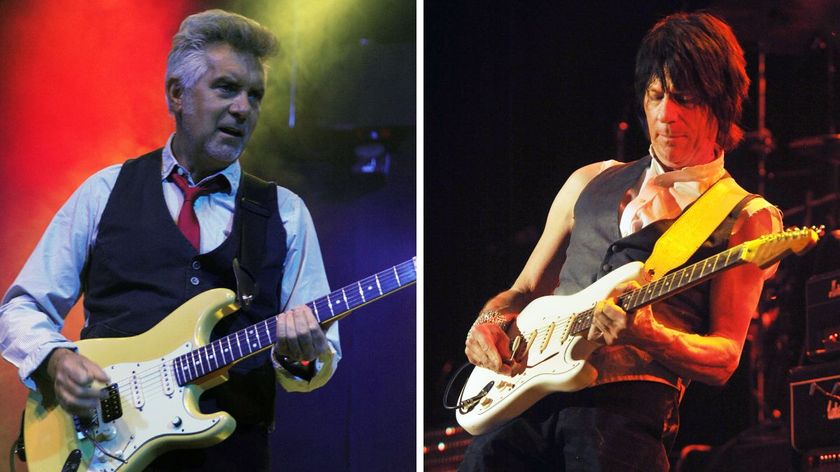
“Jeff was playing through his dodgy Marshall and didn’t like the sound. He said, ‘We’ll do it again, later on…’” Mick Rogers may be in possession of Jeff Beck’s last-ever studio recording

“I could try and recreate his vibrato for the rest of my life. It’s never going to happen. If I got to play his guitar through his rig, it’s not gonna sound like him”: Tony Iommi changed his life – now Scott Ian is playing Sabbath’s last stand

